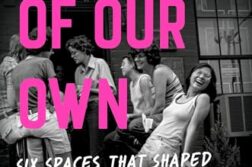Published in: January-February 2006 issue.
PEOPLE who love books know there is more to cherish about queer New Orleans than the raucous annual festivities of Mardi Gras or Southern decadence. In the Crescent City, Walt Whitman composed poetry under the live oaks, Tennessee Williams traveled on a streetcar named Desire, and, more recently, a density of souls populated Christopher Rice’s gothic tales. But how many remember New Orleans as the setting for the first lesbian romance in American literature?
The story, which is no more than a few chapters tucked in the middle of a popular mystery novel, has been easy to overlook; in fact, for decades, The Mysteries of New Orleans was completely forgotten.






